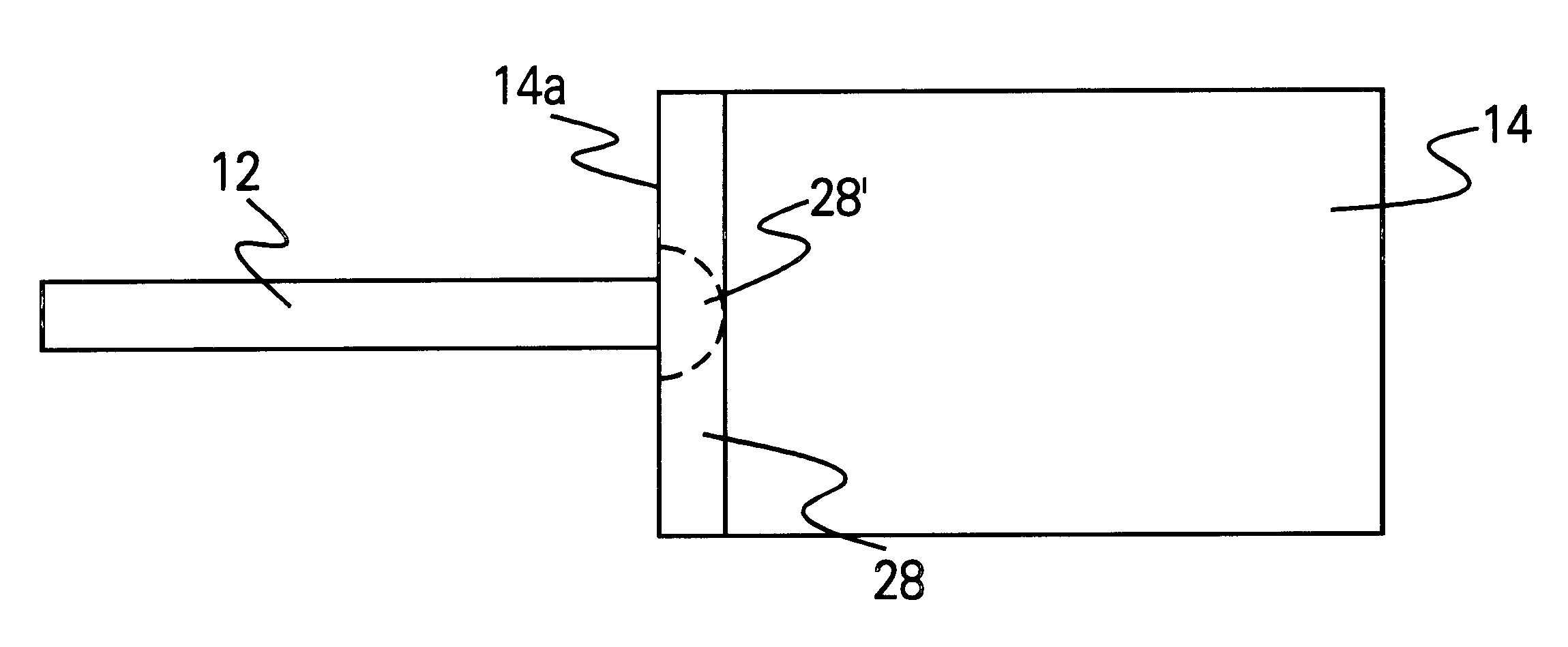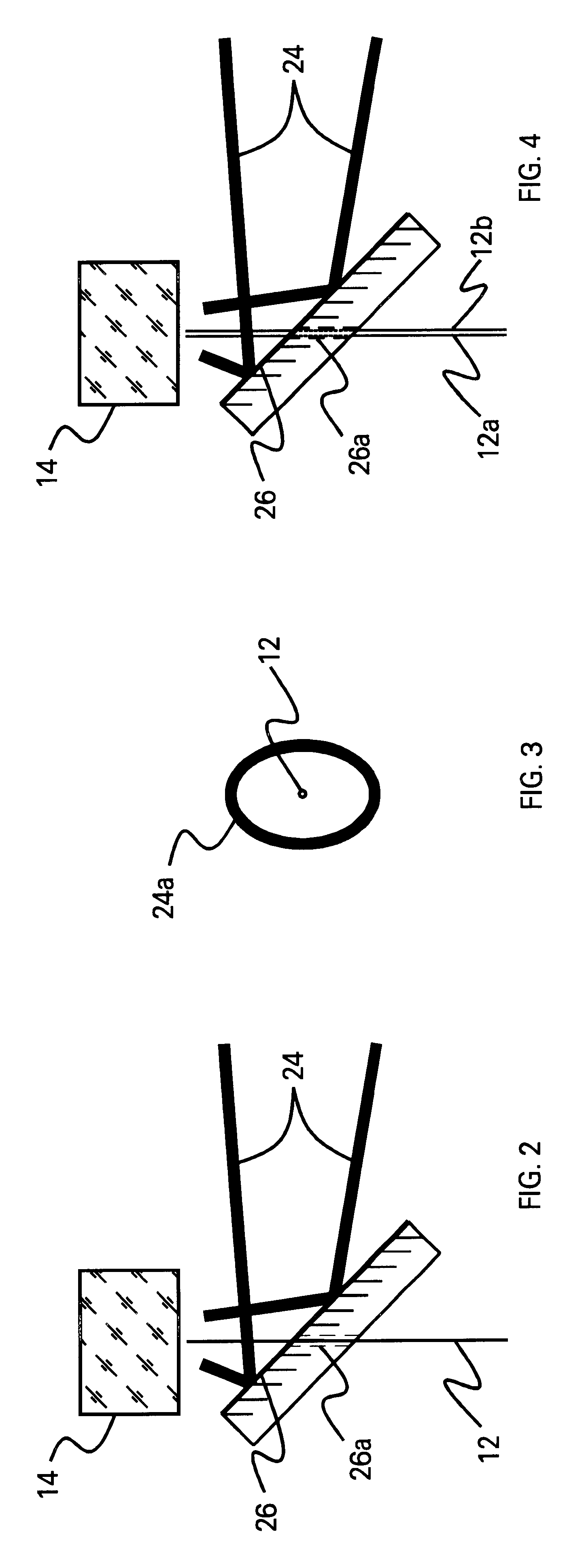Fabrication of collimators employing optical fibers fusion-spliced to optical elements of substantially larger cross-sectional areas
- Summary
- Abstract
- Description
- Claims
- Application Information
AI Technical Summary
Benefits of technology
Problems solved by technology
Method used
Image
Examples
second embodiment
In a second embodiment, the fusion occurs starting with contact of all of the optical components and the components are never separated during the fusion-splicing.
In a third embodiment, all of the optical components are brought into contact, then pulled back after alignment, and then fusion-spliced as in the first embodiment.
Qualification of the interface is accomplished by measuring the back reflection of light through the system as well as mechanical testing.
There are no practical limitations in using this technique with respect to size mismatch, or the absence of a mismatch, or in cross-sectional geometry.
Any multiple pieces of optical elements, whether comprising an inorganic glass or an organic polymer, can be fused using the method of the present invention. The most common application will be fusion of single mode fibers to optoelectronic or telecommunications devices. Fusion-splicing in accordance with the teachings herein virtually eliminates back-reflection and the associat...
first embodiment
In the first embodiment, the two components (e.g., optical fiber(s) and optical element) are aligned but separated by a space (typically a few millimeters), the laser beam is turned on to form the softening region, and the surface of the optical fiber(s) is brought in contact with the softening region of the optical element, the contact resulting in heat transfer to the surface of the optical fiber(s), which then softens, thereby achieving the fusion-splicing.
In the second embodiment, the two components (e.g., optical fiber(s) and optical element) are first brought into contact and the laser beam is then turned on to form the softening region where the two components are in contact to achieve the fusion-splicing.
third embodiment
In the third embodiment, the two components (e.g., optical fiber(s) and optical element) are aligned, then brought into contact, then separated by a space (typically a few millimeters), the laser beam is turned on to form the softening region, and the surface of the optical fiber(s) is brought in contact with the softening region of the optical element, the contact resulting in heat transfer to the surface of the optical fibers, which then softens, thereby achieving the fusion-splicing.
For fusion-splicing typical inorganic glasses, such as silica, a CO.sub.2 laser, which operates in the range 9 to 11 .mu.m, is preferred, since silica-based glasses have very large absorption coefficient. Other optical materials typically have a large absorption in the infrared, and accordingly, lasers operating in another region of the IR spectrum may be used with such other optical materials.
The laser beam is collinear and grazes the optical fiber(s). This can be accomplished in many ways. For examp...
PUM
| Property | Measurement | Unit |
|---|---|---|
| Thickness | aaaaa | aaaaa |
| Refraction | aaaaa | aaaaa |
Abstract
Description
Claims
Application Information
 Login to View More
Login to View More - R&D
- Intellectual Property
- Life Sciences
- Materials
- Tech Scout
- Unparalleled Data Quality
- Higher Quality Content
- 60% Fewer Hallucinations
Browse by: Latest US Patents, China's latest patents, Technical Efficacy Thesaurus, Application Domain, Technology Topic, Popular Technical Reports.
© 2025 PatSnap. All rights reserved.Legal|Privacy policy|Modern Slavery Act Transparency Statement|Sitemap|About US| Contact US: help@patsnap.com



